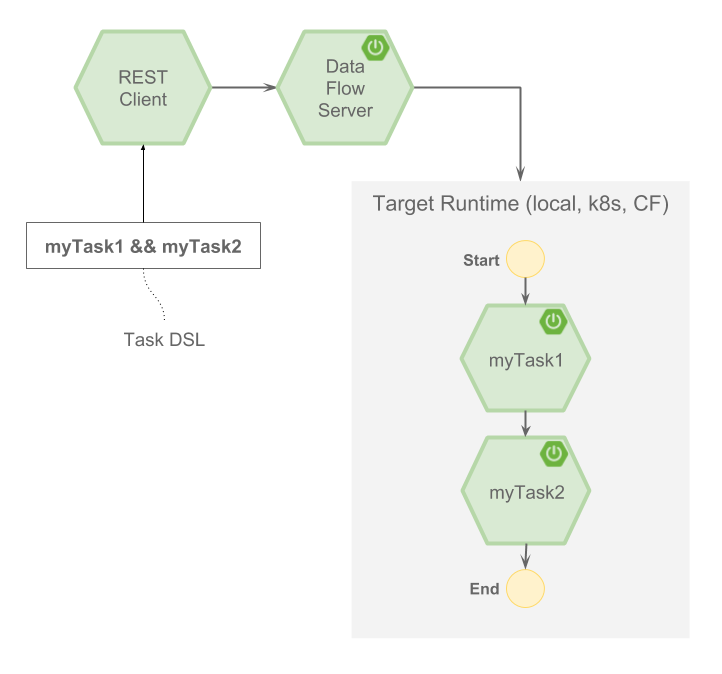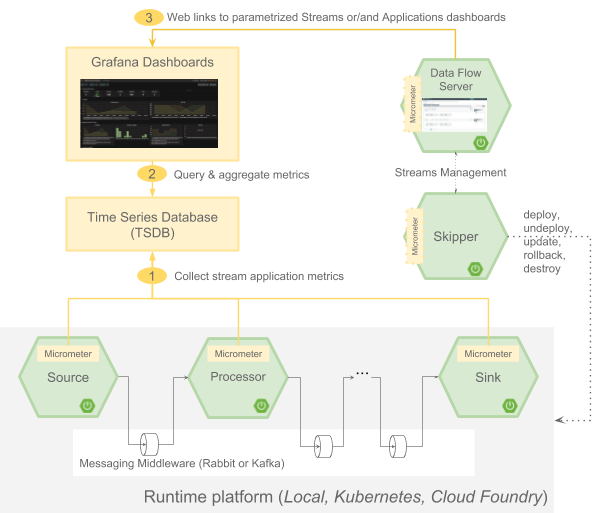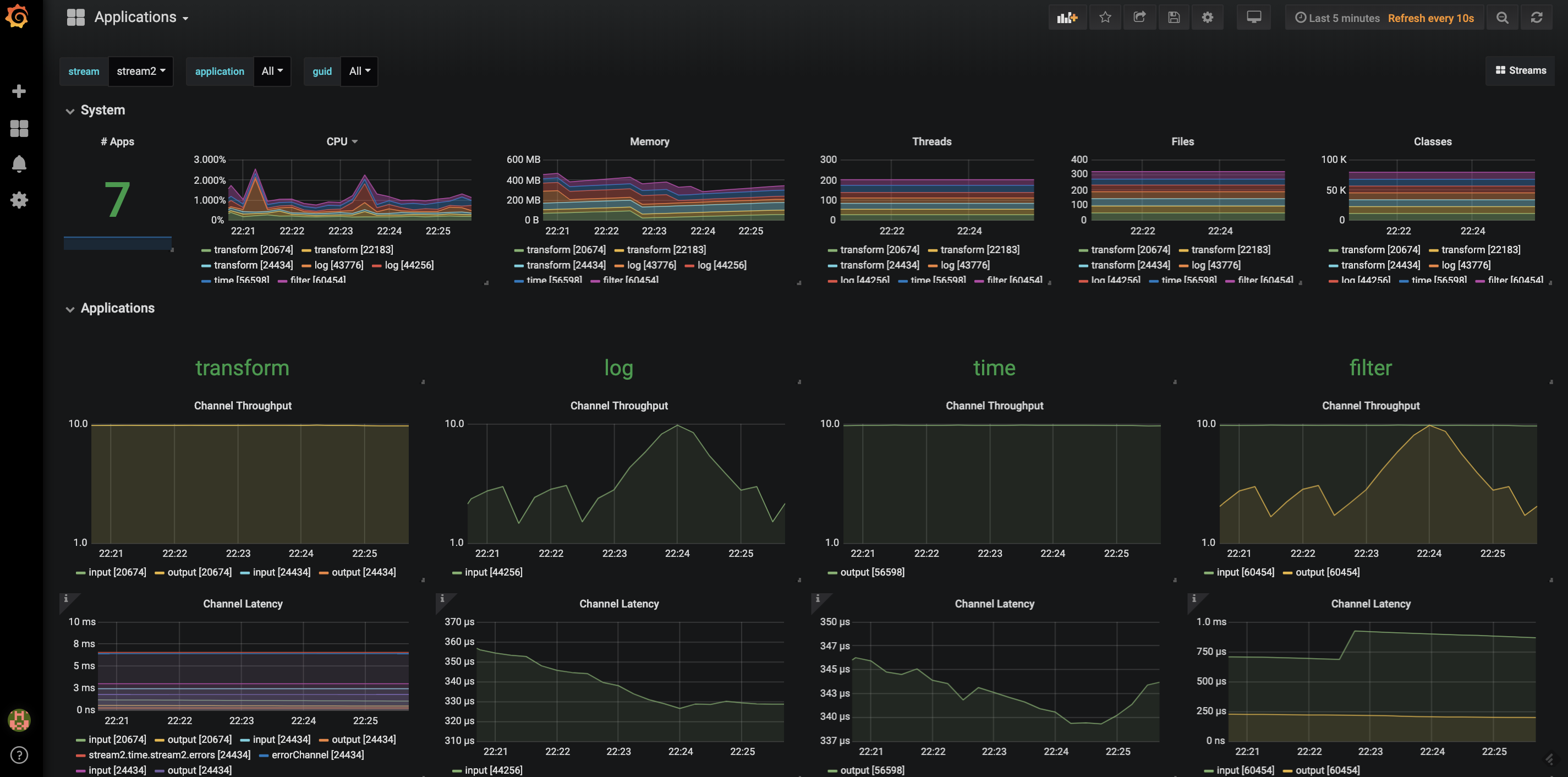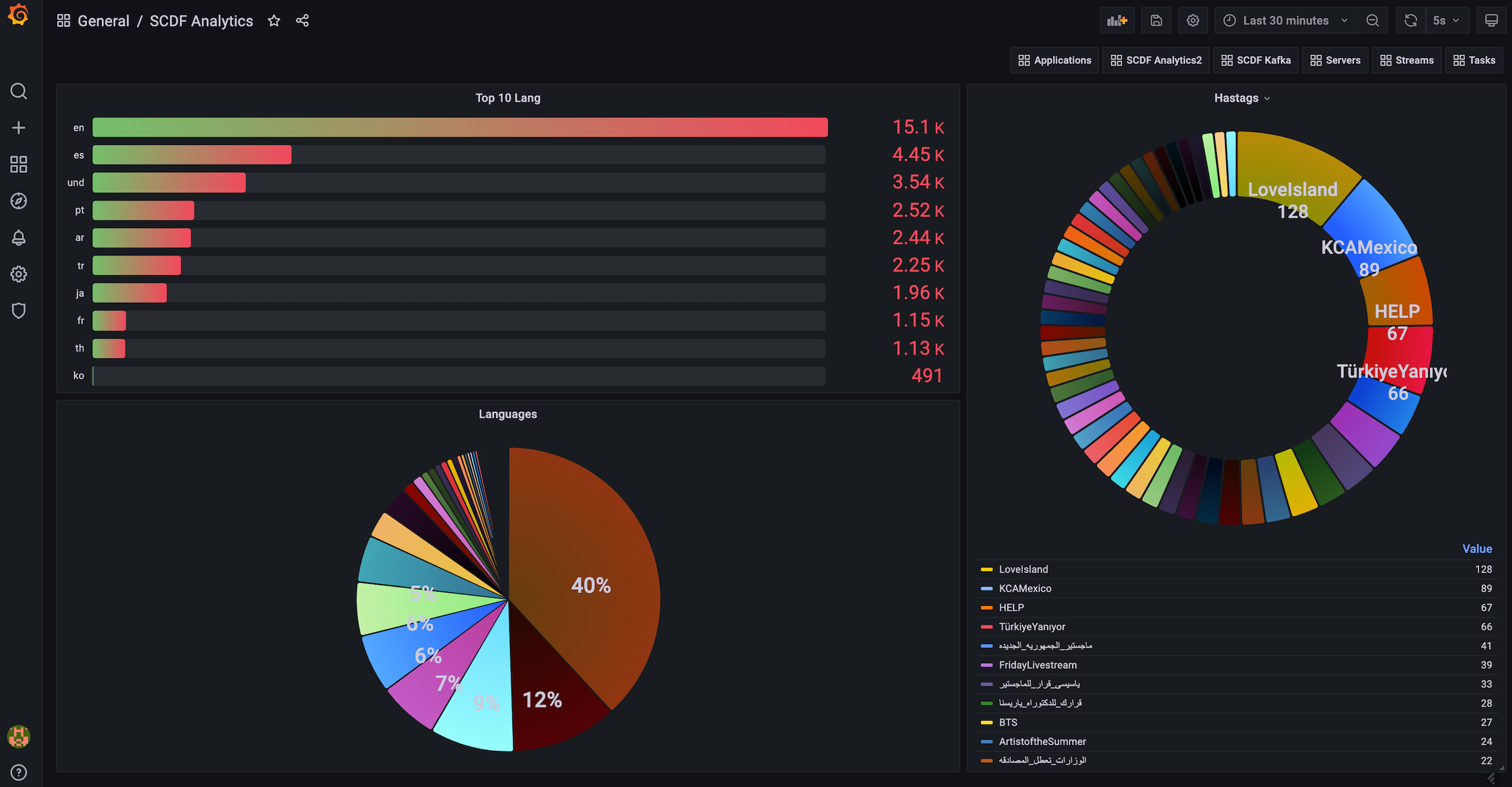Get ahead
VMware offers training and certification to turbo-charge your progress.
Learn moreThe Spring Cloud Data Flow team is pleased to announce the release of 2.0 of Data Flow. Follow the Getting Started guides for running on Local, Cloud Foundry, and Kubernetes.
Hand in hand is the 2.0 release of Spring Cloud Skipper. The getting started section in the reference guide is the best place to start if you want to use Skipper separately from Data Flow.
Stream deployment always delegates to Skipper
Single server that runs on all supported platforms
Launch tasks against multiple platforms
UI improvements
Standardize on OAuth2 and OpenID Connect for Security
Revamped metrics and monitoring of deployed applications
Updated analytics using micrometer
Database migration support
Update to Boot 2.1
Update internals to use JPA
Task/Job Execution and Performance improvements
The 1.x series of Data Flow Server allowed for Streams to be deployed directly by the Data Flow Server or to delegate to Skipper. This resulted in two modes of operation, 'classic' and 'skipper'. Now there is just one option to deploy streams, via Skipper, which can deploy to all supported platforms and also provides rolling upgrade and downgrade functionality for long lived stream applications. Architecturally, tasks are deployed by the Data Flow server as before, but can now deploy across different platforms. See below for more on that functionality.

We have consolidated the Local, Cloud Foundry, and Kubernetes servers into a single server, no need to pick different jar or docker images depending on what platform you want to run. The getting started steps for each platform remains largely the same. One big change is how Tasks are configured, see below, as we now support the capability for Tasks to be launched across different platforms. Long-lived applications can be deployed across different platforms as in previous releases.
When a task is launched you can specify the platform where it will execute. Previously, this functionality was only available for Stream and Application deployment. The Data Flow server lets you configure multiple Kubernetes and Cloud Foundry task platforms. This is particularly useful when you want to orchestrate data pipelines against multiple platforms, but manage them all from a central location.
For example, if you are running Data Flow on Cloud Foundry in org1/space1, you can launch tasks in org2/space2 or into a namespace of a Kubernetes cluster. Similarly, if you are running Data Flow on Kubernetes in namespace, you can launch tasks in namespace2 or into org1/space1 on Cloud Foundry. If running the Data Flow server locally, you can specify different local task platforms, say with different JVM properties, as an alternative to using task deployment properties. The docs describe how to configure multiple task platforms for Local, Cloud Foundry, and Kubernetes

The UI supports launching a Task against a collection of back-end platforms.
The UI/UX is built with a consistent experience for both Stream and Task launches.
Building upon another important feature-set, it is now possible to automatically enable/disable Dashboard functionality based on granular roles defined in Data Flow.
A Grafana launch-icon is natively integrated in Dashboard’s Streams and Runtime pages. With Data Flow configured against the available Micrometer backends, monitoring streaming-pipeline metrics such as message-rates, error-counts, and latency is just a click away!
A new button to rollback to the previous version of a stream is now supported.
The analytics tab has been removed and has been replaced with a link to a micrometer-fed Grafana dashboard.
Angular has been upgraded to 7.2.4
Based on user feedback added a job restart button inside the execution page of a job.
The UI and Data Flow server now support searching audit records by date.

A large amount of effort has gone into improving the security by adopting OAuth2 and OpenID Connect as the default security implementation. Traditional security options were removed. The token-based authorization, password-grant type validation, and LDAP integration are a few options, and they are consistently supported with the help of UAA as the backend.
New granular roles to govern the stream/task deployment operations were added. The granularity brings better alignment with the intended action, and the client-tools (Shell and Dashboard) automatically also adapt to it.
There is a sample application that shows how to Spring Cloud Data Flow with a Cloud Foundry User Account and Authentication (UAA) Server backed by Lightweight Directory Access Protocol (LDAP) security. Also available is documentation and sample code showing how to configure the DataFlowTemplate for use with OAuth2.0. Dependent libraries that had recent CVEs reported were updated.
The following video provides a walkthrough of the new OAuth2 security features and a composed task example using an LDAP backed UAA:
Data Flow 2.0 introduces a new architecture for collecting and displaying application metrics for Streams. The Data Flow Metrics Collector introduced in Data Flow 1.4 has been removed.

This new architecture is based on using the Micrometer library in the deployed applications to send metrics to popular monitoring systems and then visualizing the metrics with Grafana. Each application in the Einstein release train of the application starters contains Micrometer libraries for Prometheus, InfluxDB and DataDog.
We have provided instructions on how to get started using Prometheus and InfluxDB as the monitoring system for Data Flow running locally on your laptop. There are also instructions on how to get started using Prometheus as the monitoring system when running Data Flow on Kubernetes.
Links to the Grafana dashboard from the Data Flow UI are also provided. Two Grafana dashboards are also provided, one that shows a more application centric view and other that show a more stream based view. Here is a screenshot of the Grafana dashboard based on Prometheus showing the message rates for the applications in a stream.

Selectors for applications and streams allows you to navigate down to specific areas of interest.
Here is a short video showing the Stream monitoring in action.
In Data Flow 2.0, the use of Redis counters has been replaced with counters provided by the Micrometer library. The Einstein release train of application starters now provide a Counter Processor and a Counter Sink. The twitter analytics sample application has been updated to use the new counter implementation and a Grafana Dashboard is provided to show the equivalent view of what the Data Flow Analytics UI had previously shown.

Here is a short video showing the new analytics functionality in action.
Flyway migration code has been improved and tested across all supported databases using a suite of Docker based integration tests.
The Data Flow Server 2.0 release is now based on Spring Boot 2.1. With this foundation shift we took some time to address technical debt and adopt to new features from Spring Boot. As we head towards Data Flow 2.0 GA, we will continue to address technical debt areas and some additional internal refactoring.
Coming from Spring XD to Data Flow 1.x, we retained a few 'key-value' like tables and managed them via Spring JDBC APIs. We now updated to use Spring Data JPA.
Thanks to the community member Nicolas Widart for his thorough bug report on the task-execution and the performance issues associated with it.
A new endpoint was added to avoid breaking changes to the existing REST resource which is now used behind the scenes in the client tools. With these changes, queries for task/batch execution history are almost 10x faster, helping when there are hundreds of steps in a batch job.
While we have a few features in mind for 2.1, the focus on the next couple of months will be on documentation, getting started guides, videos and overall user experience. A new site for Data Flow is planned as well.
Also note that the 1.x line of Spring Cloud Data Flow will cease maintenance twelve months from this 2.0 GA announcement date, March 7th, 2020.
As always, we welcome feedback and contributions, so please reach out to us on Stackoverflow or GitHub or via Gitter.